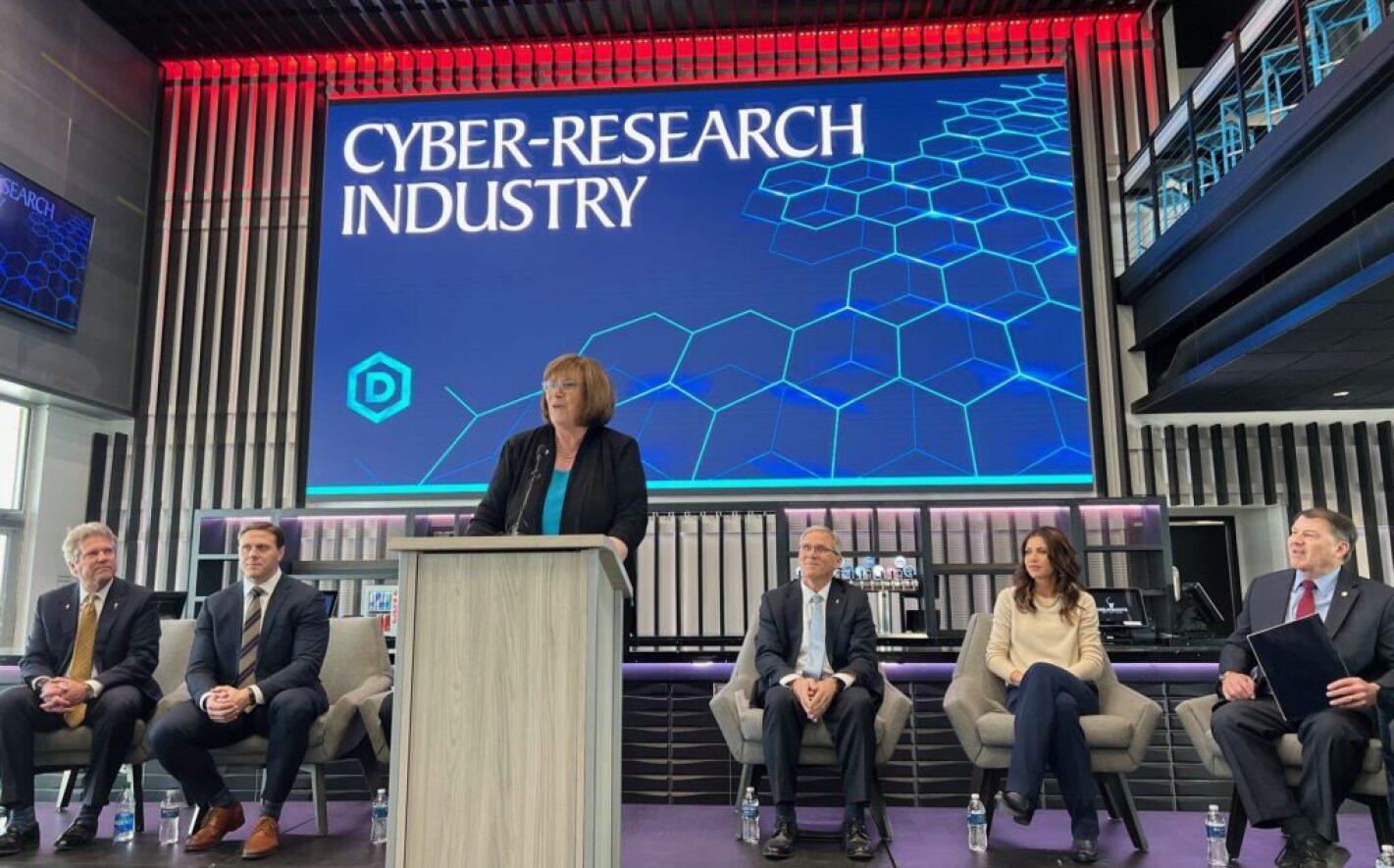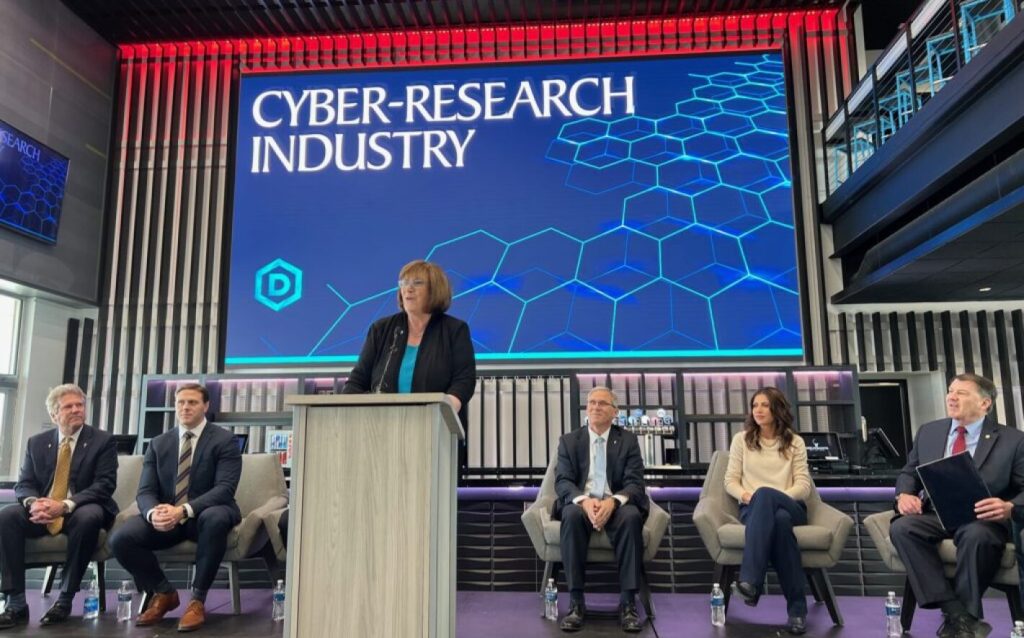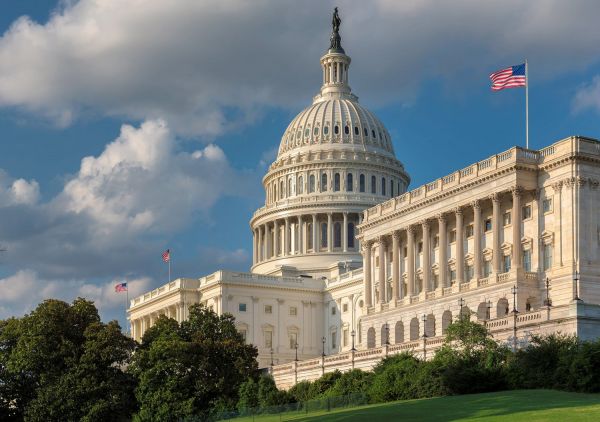MADISON, S.D. – A seed planted by South Dakota legislative and higher education leaders four decades ago has blossomed into one of the nation’s top high-tech universities located in a small city in the rural midsection of the state.
Dakota State University was founded in 1881 as a school for teacher education in the Dakota Territory.
The story of how Dakota State University rose to become a powerhouse in cyber technology academics, job creation and research is one of ingenuity, strong leadership and a bit of fortuitous timing.
 Those factors have combined to build DSU into a university that has received well over $140 million in public and private donations over the past decade. The university has developed numerous working partnerships with government and private industry, and it’s expanding its campus with a massive research and development facility in Sioux Falls. Soon, DSU could become a leader in research into the world’s next major technology breakthrough in quantum computers.
Those factors have combined to build DSU into a university that has received well over $140 million in public and private donations over the past decade. The university has developed numerous working partnerships with government and private industry, and it’s expanding its campus with a massive research and development facility in Sioux Falls. Soon, DSU could become a leader in research into the world’s next major technology breakthrough in quantum computers.
And it all began at a time when the future of the entire university itself was in question.
In 1984, the South Dakota Board of Regents, under pressure to cut its budget, closed its Springfield campus and the state turned it into a women’s prison. The late Gov. Bill Janklow that spring also signed a law that changed DSU’s mission to focus on technology in all academic programs, a hopeful effort called, “A Brand New Day.”
The decision to reinvent a teacher’s college founded in 1881 into a technology-focused university in a somewhat isolated rural city of 6,000 people may, in retrospect, seem like a risky move.
But as told by current DSU President José-Marie Griffiths, the new focus on tech dovetailed with the decision by financial giant Citibank to move its credit card operation to Sioux Falls, an hour’s drive from Madison.
“Citibank was in need of mainframe programmers. And as a result of that, somebody came up with the idea that, well, we could turn this college that’s fumbling a little bit into a computer school with software development and engineering,” Griffiths told News Watch. “That way, we could supply the needed programmers to the Sioux Falls workforce for Citibank and ultimately for others, and I guess the advantage of proximity was in favor of Madison.”
Initially, mission shift not universally supported
DSU business and information systems professor Lynette Molstad Gorder was teaching at the university 40 years ago when the shift to a high-tech campus began. In a video recorded by DSU, Molstad Gorder recalled that there was initial hesitancy on campus about the mission change.
“The first thing that goes through your mind is apprehension,” she said. “How it’s going to affect you personally and how it’s going to affect faculty and the curriculum we had set up.”
Molstad Gorder, who was teaching typing and office and records management at the time, said acceptance of the shift to technology slowly washed over the DSU campus.
“Later on we looked upon it as a welcome opportunity,” she said. “It was kind of hazy (at first) and then all of a sudden, it just clicked.”
Suddenly, computers replaced pens, pencils and typewriters in classrooms. And later, the need to delve more deeply into computer science, and eventually cyber security, became a greater focus at DSU, she said.
“Somehow we had to protect this whole digital infrastructure,” she said. “With our faculty and staff we were able to move into the whole cyber security realm of problems and issues and teach our students. And we’ve had great success.”
Molstad Gorder said she sees a continued bright future for DSU.
“When you look at 40 years ago in 1984 what we were using to accomplish the tasks and what we have today, it’s absolutely amazing,” she said. “Everything seems to be going faster and faster (and) it takes a lot of power and leadership to keep abreast of all the changes that are happening.”
DSU’s venture started with computer science
In 1984, while still known as Dakota State College, a name used until 1989, the initial jump into technology came with creation of a bachelor’s degree in computer science using a curriculum from IBM. That foundation in teaching computer science and software development – and in forming an industry partnership – laid the groundwork for what was to come, Griffiths said.
With a mix of private and public funding, the university was able to slowly but consistently expand its facilities and academic offerings, she said.
In the early 2000s, a further step forward came when DSU began to focus on cyber security.
“We were actually quite late in the game to get into cyber security,” Griffiths said. “But DSU decided to get into that game and did so with a vengeance.”
A milestone achievement, and a significant source of mission confirmation, came 20 years later, in 2004, when the National Security Agency named DSU a Center of Academic Excellence in computer security, one of the first. It is now one of just 10 in the nation to hold three center of excellence designations from NSA.
Now, another 20 years later, that gradual growth has exploded into almost constant expansion of academic offerings, research opportunities, industry and government partnerships and construction of new facilities to accommodate it all.
⌊ Governor Noem Turns Down Federal Cyber Money, Lawmaker Suggests Using State Funds ⌋
Enrollment has risen steadily, from 867 in 1985 to 1,801 in 2000 and to 3,509 in 2023. The number of female students enrolled in technology programs has jumped about 300% in recent years, according to DSU data.
Dakota State University now offers 44 degrees, including seven master’s degrees and four doctoral programs. Upon graduation, 99.7% of students in 2022 got jobs or went further in their educational journey, the university said.
Shift toward research
When Griffiths arrived on campus, DSU had a strong academic reputation but was not known for its research. In her time at the helm, she has pushed to obtain funding and the infrastructure necessary to conduct research and develop doctoral programs to involve students and faculty in the work.
In 2017, the research and development efforts took a major step forward with the launch of the Madison Cyber Labs, or MadLabs, facility on campus. A sparkling, glass-encased $18 million research building is at the heart of what overall was a $40 million program to expand research into groundbreaking fields of cyber security, digital forensics, machine learning and artificial intelligence, among others.
The state pitched in $10 million in Future Fund money to add to a $30 million donation from Premier Bankcard CEO Miles Beacom and wife Lisa, along with Denny Sanford, owner of the Sioux Falls-based First Premier Bank and Premier Bankcard.













